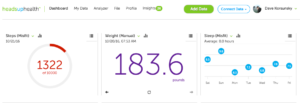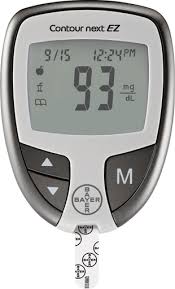What to Expect When Switching to High Fat Diet
In this post we will explore the high fat diet and how you can start testing if for yourself. We propose that rather than focusing on "reducing fat" and "cutting calories," you should consider a focus on eating foods that promote stable blood sugar.
Healthy and stable blood sugar holds the key to weight loss, hormonal health, better sleep, stable energy, lower blood pressure and more. As it turns out, a diet that supports stable blood sugar tends be higher in healthy fat and lower in carbohydrates.
Heads Up Health gives you the tools to change your diet and track the results for yourself, regardless of which diet you are on. You can get started for free using the button below. Or read on to find out how you can transform your health through a high-fat diet and better blood sugar management.
SIGN UP FOR FREE!
High Fat Diets – Getting Started
Step 1: Re-program the way you think about weight loss
Making the switch from a low-fat diet to a high-fat diet may seem counterintuitive for many people. For decades we've been told to eat "low fat" and that in order to lose weight, we should cut back on calories.
As it turns out, the whole notion that dietary fat leads to high cholesterol and that high cholesterol causes heart disease was based on research that has now been disproved. We had it wrong. Rates of heart disease, obesity, cancer and diabetes have INCREASED as we've removed healthy fats from our diets and replaced them with calories from refined carbs, sugar, grains and processed foods.
When consumed, these processed foods (bread, cereal, pasta, fruit juice, grains, soda etc.) cause huge spikes in our blood sugar. When blood sugar spikes, the pancreas secretes insulin to help shuttle the circulating glucose into our fat cells. Insulin is a hormone that tells the body to store fat rather than to burn it as fuel .

Blood sugar testing before and after meals
By switching to a diet that keeps blood sugar low, we reduce insulin secretion and reduce the amount of fat being stored by the body. Replace refined carbs, grains, sugars and processed foods with sources of healthy fats such as avocado, salmon, butter, olive and coconut oils, nuts, seeds, and grass-fed meats. We provide some recommended reading on finding an optimal diet in the appendix.
Key takeaway: Shift your thinking from "low fat" and "calorie restriction" to instead focus on "low blood sugar" and "minimizing insulin secretion". You can eat healthy, high calorie, high fat meals that keeps you feeing full and keeps blood sugar low.
Key takeaway: Eating healthy fat does not make you fat. Food that jacks up your blood sugar makes you fat. Healthy fats provide a slow, stable calorie burn and do not spike blood sugar.
Step 2: Exercise
Diet alone is rarely enough to reach a state of optimal health. We still need to exercise. Our bodies have evolved to be physically active. Sweat is your friend! Develop an exercise plan that works for you. Ideally one that focuses on plenty of walking (10,000 steps per day), strength training 3 times per week and sessions of higher intensity cardio at a level that is safe for you.

Our bodies were designed to move! Tracking steps can help…
Step 3: Measure-Measure-Measure
Don't take our word on any of this stuff, try it yourself and collect the data!
3a. Measure your macronutrients: Download myFitnessPal and start logging everything you eat. myFitnessPal will show you exactly what percentage of your calories are coming from fat. vs. carbs. vs. protein (see image below). Slowly move your macronutrient breakdown to the point where you are getting 50-60% (or more) of your daily calories from healthy fats. Keep protein at about 20% and the remainder from complex carbohydrates (vegetables, sweet potato, yam).

Track your macronutrients with myFitnessPal
3b. Measure your blood sugar: Purchase a glucometer and start logging your blood sugar. We recommend checking your fasting blood sugar in the morning and also measuring your blood sugar one hour, two hours and three hours after each meal.

Blood sugar testing
Experiment: Test your blood sugar one hour after eating pizza, a burger/fries or your favorite comfort food. Compare to results an hour after eating a hearty serving of salmon and steamed vegetables loaded with butter. You should see a much lower reading from the high-fat/low carb meal. Tailor you food intake to meals like this which keep blood sugar low.
For a quick tutorial on how to track blood sugar in Heads Up Health, see this video.
3c. Track your weight and your body fat percentage: There are scales on the market for under $50 that can measure both weight and body fat (see appendix for recommendations). Log this data in Heads Up over the course of your experiment.
Experiment: Cut out bread, pasta, sugar, soda and as many processed foods as you can for one month. Get at least 10,000 steps per day. Track your data in Heads Up Health. Do it!
Step 4: Work with a professional who can guide you on your journey
Many conventional doctors are still preaching the low fat dogma and will counsel you against moving to a diet higher in healthy fats. Seek out an alternate practitioner who can give you another perspective and come to your own conclusions on what you think will work best for you.
Primaldocs.com is a great source for finding a health practitioner who can help you on your journey. You can also contact Heads Up Health's own Functional Medicine advisor, Dr. Justin Marchegiani, who can guide you on making the changes to your diet.
Summary
Somewhere along the line we got it wrong. We thought dietary fat was bad and we removed it from our diet. We replaced fat with sugar, grains, refined carbohydrates and processed foods but this made the situation worse. Now our blood sugar is getting jacked up after every meal and it's making us fat and sick.
Our key takeaways:
- Reduce or eliminate breads, pastas, grains, sugar, processed foods and refined carbohydrates. Start slow and work at your own pace to phase these foods out of your diet.
- Replace the calories that were coming from these foods with calories from healthy fats. Obtain the rest of your calories from good quality protein, vegetables and modest amounts of low-sugar fruit.
- Exercise. If nothing else, strap on a FitBit and get 10,000 – 15,000 steps per day. Ideally add in strength and cardio training.
- Measure your results in Heads Up Health. The data will guide you.
- Find a skilled practitioner to help you on your journey.
New research has shown us that healthy fats are good for us. They keep blood sugar low and provide a steady source of energy throughout the day. You can make the switch and Heads Up Health will give you the tools to measure it yourself. Sign up now and get started or contact us if you have any questions!
SIGN UP FOR FREE!
Appendix
- A great way to get started with a high-fat, low-carb, low inflammation diet is Dave Asprey's Bulletproof Diet:
- https://www.bulletproofexec.com/start-the-bulletproof-diet/
- For additional reading, look into diets based on a paleolithic template
- Glucose tracking:
- Traditional glucometer: Any glucometer should work fine. We recommend the Precision Xtra.
- Wireless: For a wireless model that can integrate with Heads Up Health, we recommend the iHealth BG5 model.
- Body composition:
- Traditional body fat scale: The Tanita BF679W is accurate and very affordable.
- Wireless models: The FitBit Aria or the Withings WS50 can both wirelessly sync with your Heads Up account.
What to Expect When Switching to High Fat Diet
Source: https://headsuphealth.com/blog/heads-up-hqself-tracking/making-the-switch-to-a-high-fat-diet/
0 Response to "What to Expect When Switching to High Fat Diet"
Post a Comment